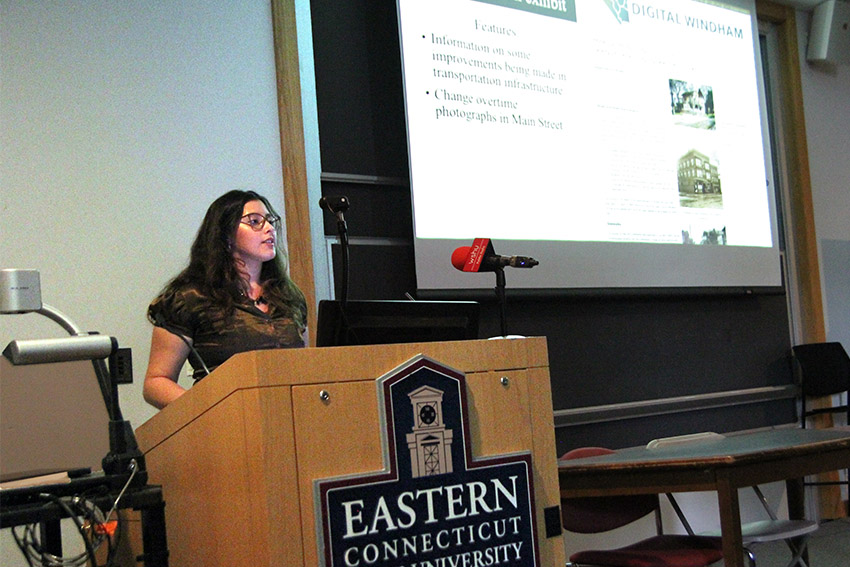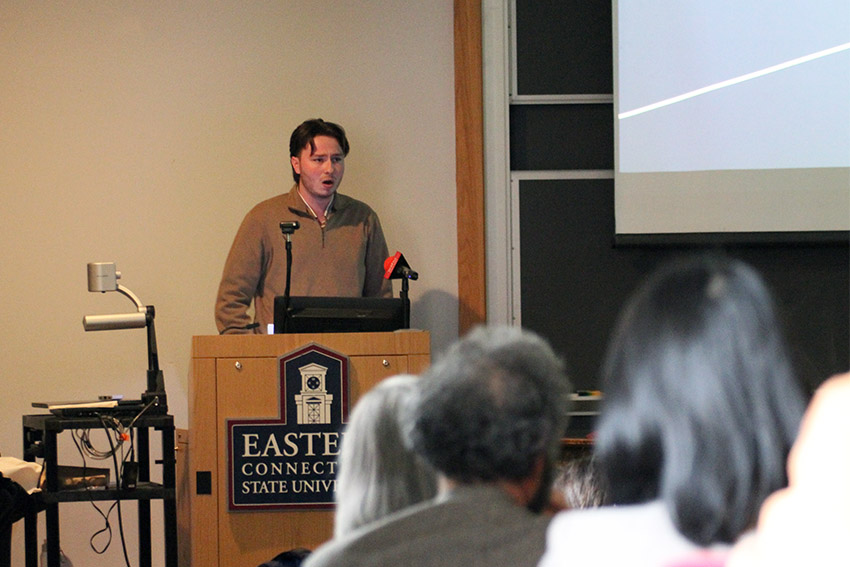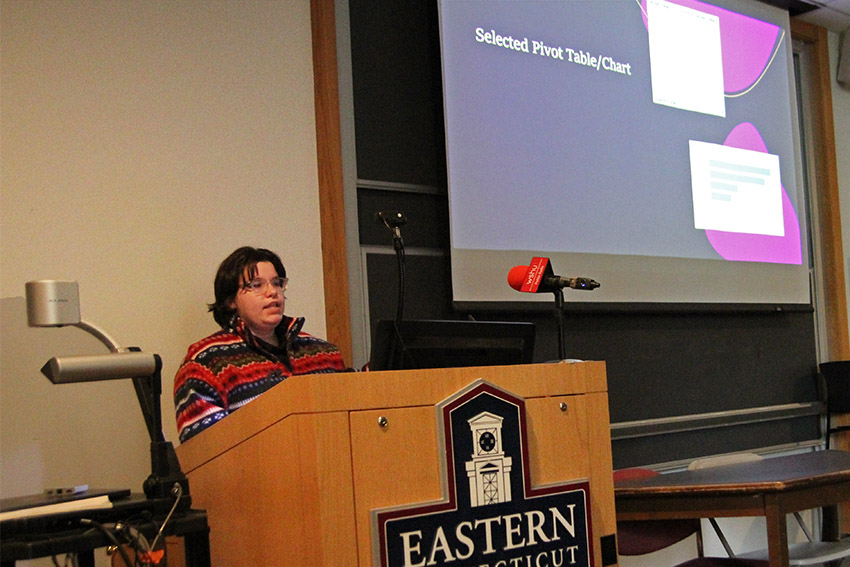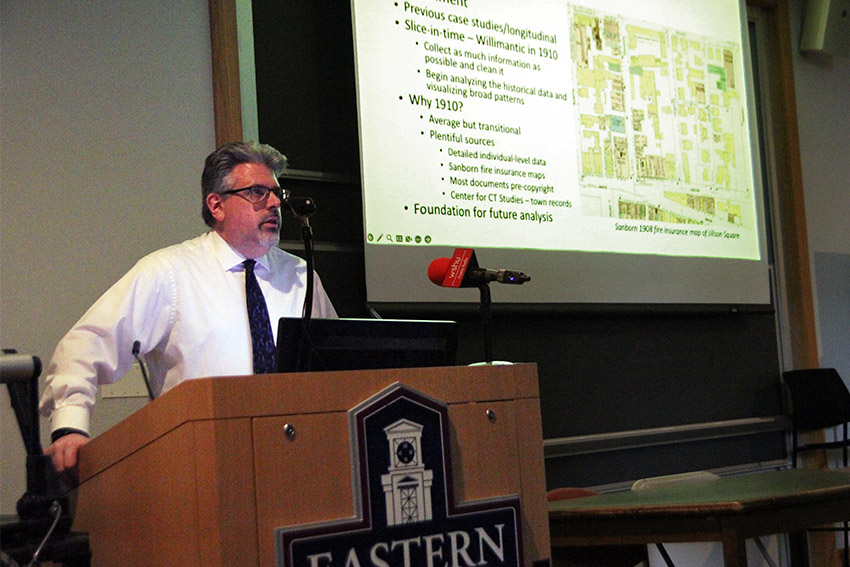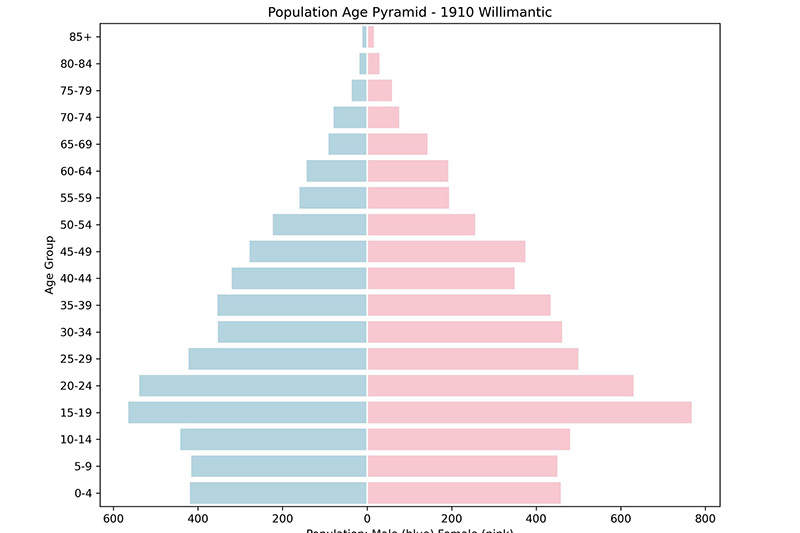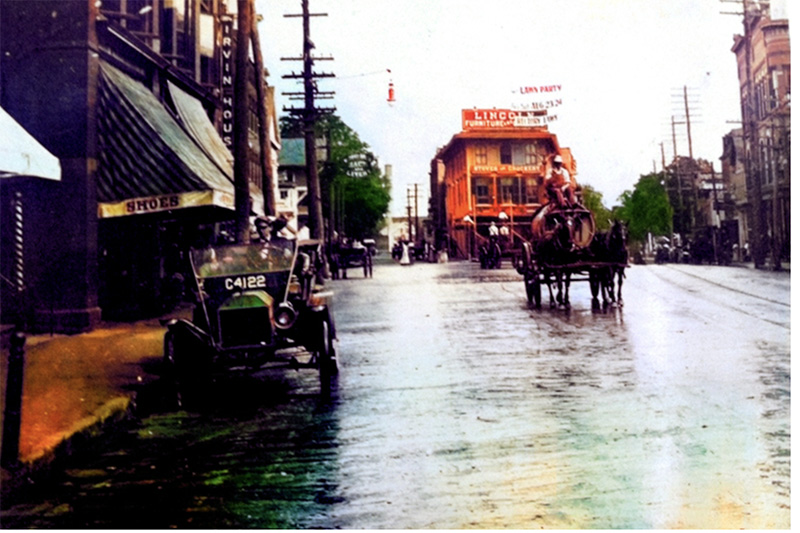- Apply
- Visit
- Request Info
- Give
History website shows what Willimantic was like in 1910
Written by Lucinda Weiss
Published on May 16, 2023
The second phase of “Digital Windham,” a website created by historians at Eastern Connecticut State University, is now live with new exhibits exploring what Willimantic was like in 1910.
A showcase unveiling the expanded site was held May 4, where students and faculty presented their new research.
The website, created in 2020 and populated with stories researched and written by Eastern students, currently has 19 digital exhibits that chronicle past events, people and places in Willimantic and Windham from the 1600s to today. The exhibits include narratives and images of 471 artifacts such as photos, maps and copies of obituaries. The 15 exhibits that were added put 1910 Willimantic in a historical context, looking at the school system, social and cultural groups, the make-up of the population and other areas.
“It’s a lot of content – probably 100 (web) pages worth,” said Jamel Ostwald, professor and head of the history department, who directs the project and provides technical support. “The intent is to give us a slice of life of what it was like to be in Willimantic in 1910,” he said.
That year was chosen because “1910 was kind of an average year, but it was a transition in terms of technology, politics and so on,” he said. The transition shows up in a 1910 photo of Main Street, where the modes of transportation include a trolley, horse carriages, and early automobiles, all vying for street space.
Social groups popular at the time included a bicycle club, a canoe club and the Masons. The population had a large contingent of 15- to 24-year-olds, many working at the textile mills. This was the Progressive era in national politics, as intellectuals led movements to improve society, and immigration had just surged. Polish and French Canadian immigrants had come to work at American Thread Co. mills in the 1890s and 1900s, Ostwald noted. Earlier, the U.S. had experienced a wave of Irish immigrants. By the 1920s, Congress cracked down with quotas and harsher immigration laws.
The population of Willimantic grew from around 8,000 in 1890 to around 10,800 by 1910. A now-retired Eastern history professor, Anna Kirchmann, who helped create the website, had transcribed Census records from 1870 to 1930 into Excel spreadsheets that were used to create graphs. Additional information came from the Center for Connecticut Studies and the Archives and Special Collections in the Eastern library, which houses town records, police reports, school board budgets and more, and 1,000 pages of the Willimantic Chronicle from 1910 alone, Ostwald said. Postcards and photos also came from area museums. The data was culled by students in his digital history class last fall and two students doing independent studies this spring semester.
The students could look at data sources such as the Census and see the connections between the data and the stories they found in the archival material, he said.
Students working on the project this year include Paula Hernández Aulet ’24, Emma Dashnaw ’22, Jacob Krupa ’23, Jenna Rice ’23, and Tom O’Brien ’25.
Ostwald’s own research specialty is modern Europe, but he uses his IT knowledge and skills to teach digital history at Eastern. Digital history is becoming popular but is usually seen more in graduate-level courses, he said. Students who take his course learn to work with original documents from the past but also the current-day skills of building web pages, analyzing data with Excel and using GIS for mapping.
He expects that future Digital Windham work will include more data analysis of Census records, looking at mortality rates, for instance, and tracing population flows – who stayed in town and who left.
The Digital Windham website is active now with the new exhibits.



